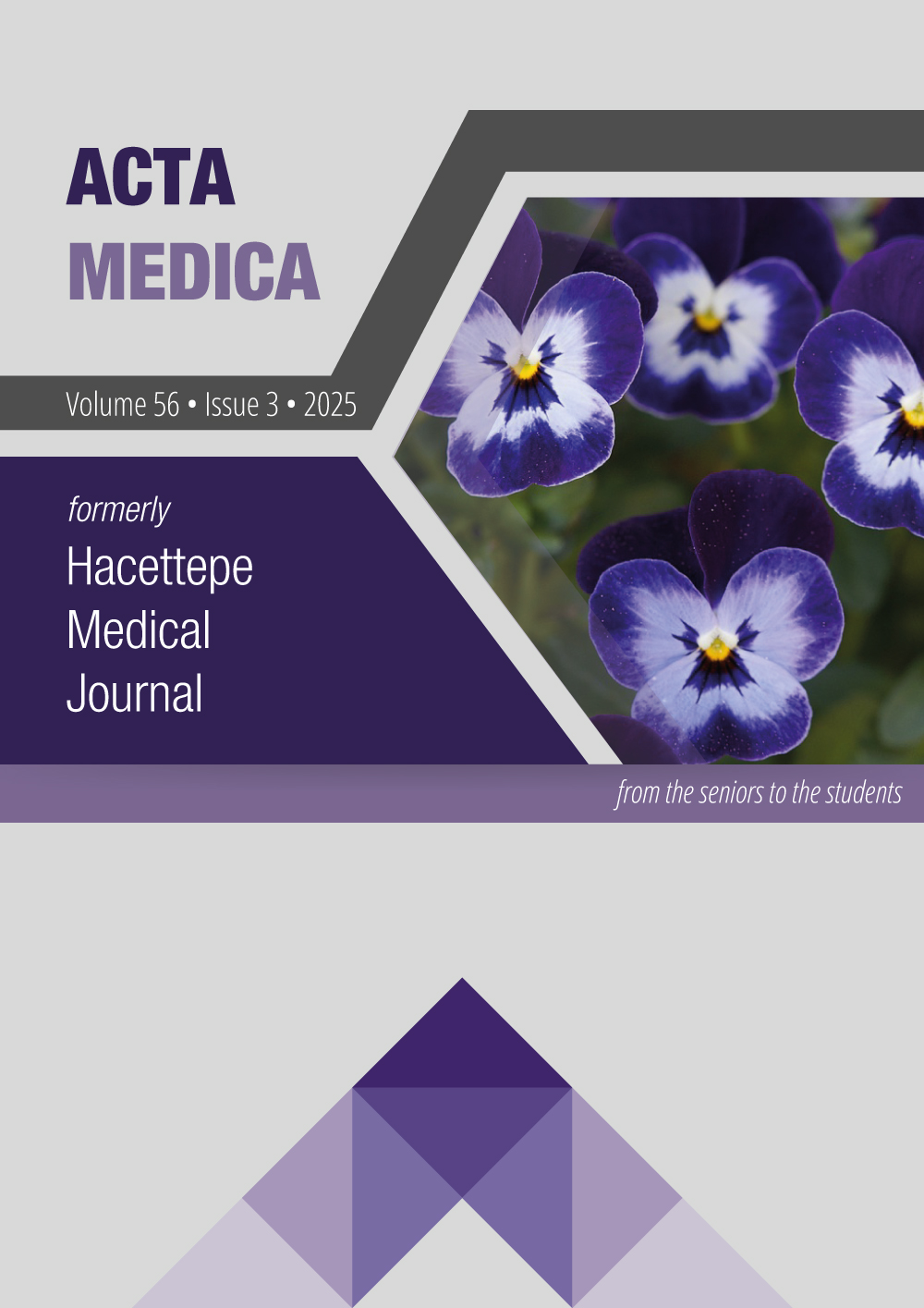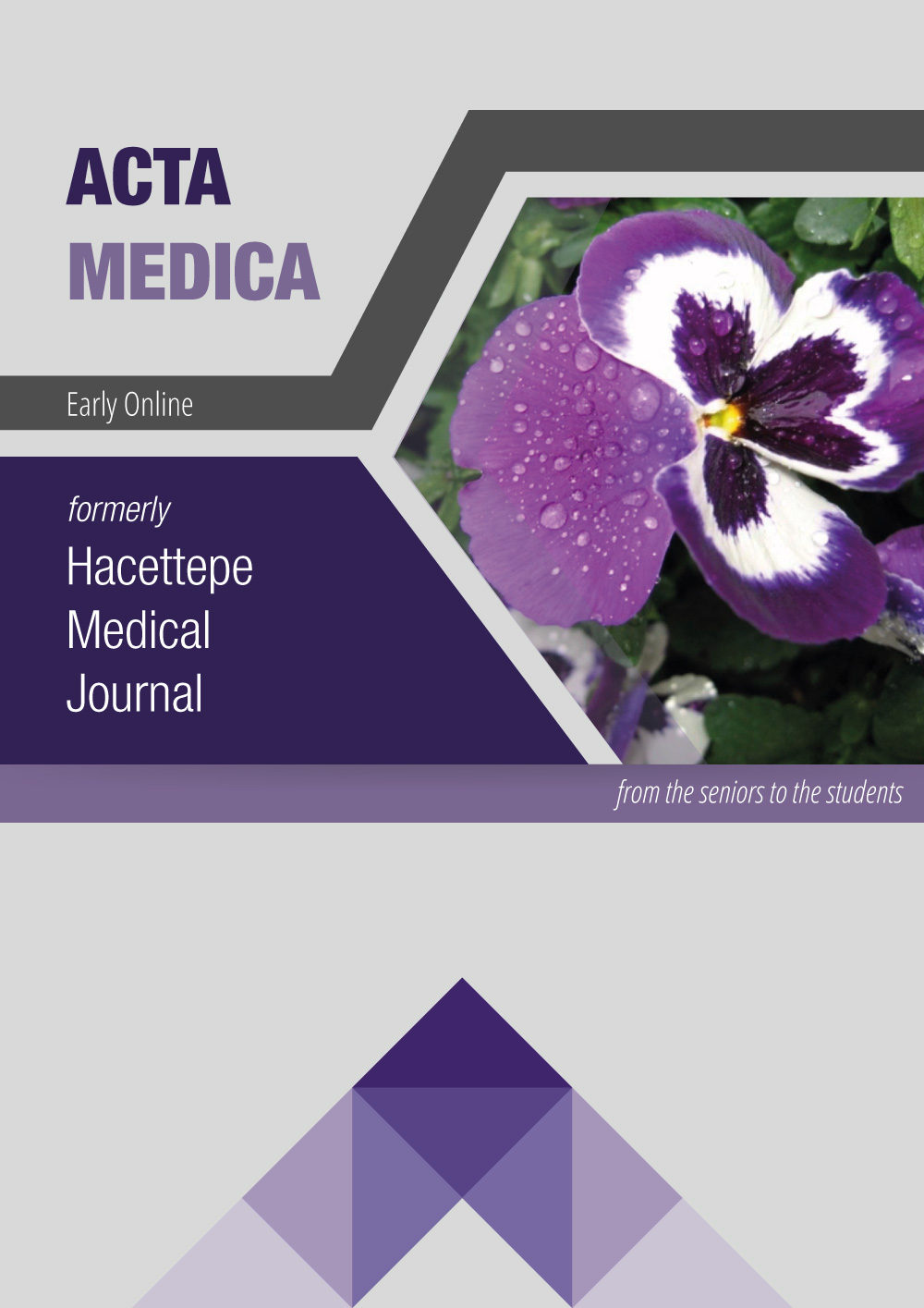Treatment outcomes of postoperative abdominal bleeding after oncologic surgery: a retrospective comparative study of surgical and interventional radiologic treatments
DOI:
https://doi.org/10.32552/2025.ActaMedica.1148Keywords:
Intra-abdominal bleeding, interventional radiology, embolization, bleeding control, malignant abdominal surgeryAbstract
Objective: Postoperative abdominal bleeding (POB) is a rare but life-threatening complication after abdominal oncologic surgery. POB can increase mortality by up to sixfold. Surgical treatment (ST) is generally preferred for early bleeding, while interventional radiologic treatment (IRT) is often favored for late bleeding; however, the literature remains inconclusive. This study aimed to compare the outcomes of ST and IRT in patients who developed POB after abdominal surgery for malignancy.
Methods: Patients who underwent abdominal surgery for malignancy between January 1, 2014, and December 31, 2024, were retrospectively reviewed. Bleeding occurring within 24 hours postoperatively was defined as early, while bleeding after 24 hours was considered late. Demographic data, clinical characteristics, treatment modalities, and outcomes were analyzed.
Results: Of 2,266 patients, 35 (1.54%) developed POB and were included. Seventeen (48.57%) had early bleeding, and 18 (51.43%) had late bleeding. ST was performed in 18 patients (51.43%), and IRT in 17 (48.57%). Median time from surgery to bleeding was significantly shorter in the ST group (1 vs. 14 days, p<0.001). The ST group also had lower median red blood cell transfusion requirements (6 vs. 25 units, p<0.001) and shorter hospital stays (15.5 vs. 33 days, p=0.008). Among four late-bleeding patients treated surgically, three (75%) died. Rebleeding occurred in three IRT patients (17.65%), two of whom had bleeding from pancreaticojejunal anastomosis. Overall mortality was 31.4%, with no significant difference between groups (p=0.54).
Conclusion: POB after malignant abdominal surgery is a serious condition. ST for early bleeding and IRT for late bleeding offer comparable success and mortality rates. However, IRT is associated with higher rate of rebleeding in cases of pancreaticojejunal anastomotic hemorrhage, while ST for late bleeding carries a high mortality risk. Major abdominal surgeries should be performed in centers equipped for IRT, and treatment decisions should be made within a multidisciplinary framework.
Downloads
Downloads
Published
How to Cite
Issue
Section
License
Copyright (c) 2025 Acta Medica

This work is licensed under a Creative Commons Attribution-NonCommercial-NoDerivatives 4.0 International License.


